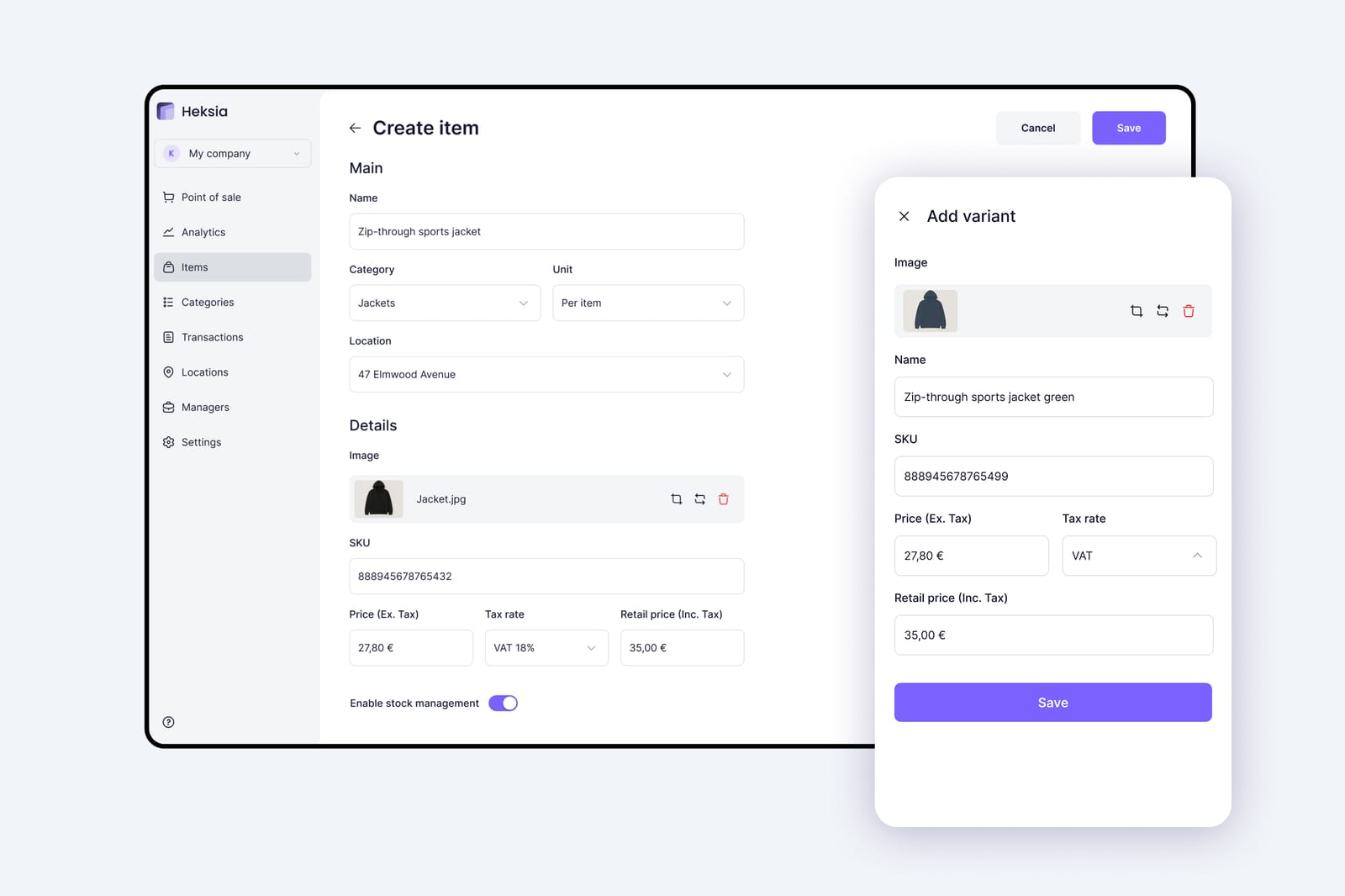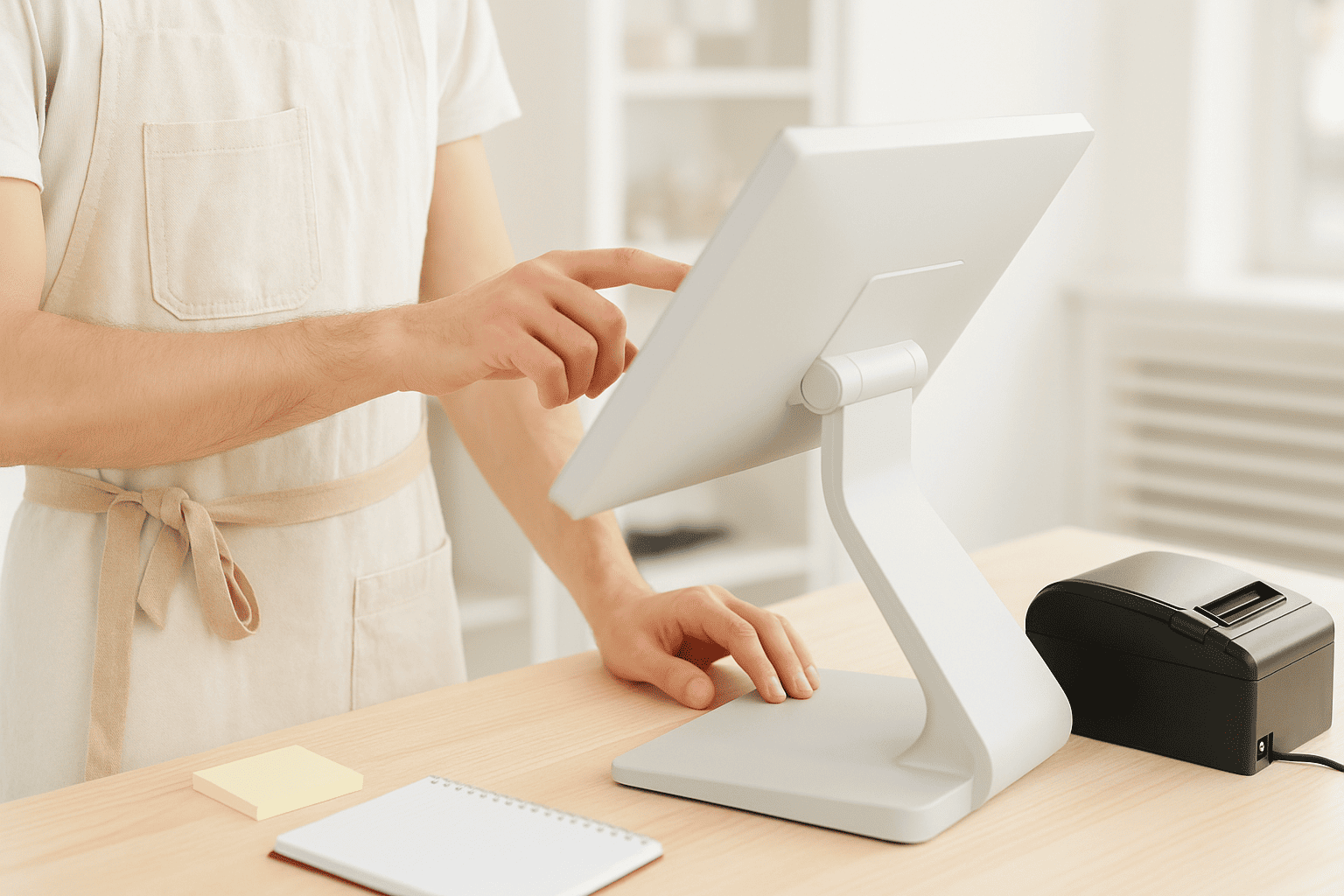Automating your retail operations is a powerful way to manage your business more efficiently, reduce operating costs, and improve the customer experience. A POS system in retail helps to streamline sales, track inventory, monitor stock levels, and provide valuable insights for smarter decisions.
What is a POS system?
At its core, a POS system is the cashier’s main workstation — but it goes far beyond just processing sales. With built-in inventory management, it brings structure to your store, boosts profitability, and delivers faster, smoother service to your customers. A POS system lets a business owner process sales and returns quickly and accurately with receipts, always know real-time stock levels, see exactly how much profit is made on each item, update prices across all store locations in minutes, complete inventory counts much faster than manually, and maintain better control over staff.
Benefits of implementing a POS system in retail
A retail POS system helps automate checkout processes, boost customer loyalty, reduce the risk of inventory loss, and speed up stocktaking. For store owners, the key benefits include:
- Quicker customer service. It speeds up the checkout process by allowing the cashier to quickly scan items, with the system automatically calculating the total and processing payments. This reduces wait times and makes the shopping experience more convenient for customers.
- Enables Inventory Control. A retail POS system helps you stay on top of inventory management. It tracks stock levels, alerts you when items need restocking, and reduces the risk of shortages or overstocking. Automated stock notifications ensure timely replenishment, helping you make smarter, data-driven business decisions. The system also collects sales data, allowing you to analyze demand, identify best-selling products, and optimize your product mix.
- Automatic tracking. The POS system simplifies the return process by automatically updating inventory levels, recording the reason for the return, and tracking incoming stock, sales, and returns. This ensures faster handling of returns and refunds, saves staff time, and improves the customer experience.
- Remote monitoring of in-store operations. Remote monitoring gives business owners real-time visibility into all their locations — anytime, anywhere. You can track sales, inventory levels, staff performance, and customer activity across every store from a single dashboard, making it easier to stay in control, identify issues early, and make informed decisions without being on-site.
- Profit reports. Detailed reports in a POS system help business owners understand their financial performance with clarity. You can see which products or services drive the most revenue, track expenses, calculate profit margins, and compare performance over time. These insights make it easier to identify growth opportunities, cut unnecessary costs, and make data-driven decisions to boost profitability.
- Easy management of discounts and promotions. Easy management of discounts and promotions allows staff to apply special offers at checkout — either to individual items or the entire purchase. This gives retail stores the flexibility to respond to customer requests, run in-store deals, or reward loyal shoppers on the spot, all while ensuring the discount is clearly reflected in the final receipt and sales records.
As your business grows, a retail POS system makes it easy to connect multiple store locations into one unified network — enabling centralized inventory tracking, sales reporting, and remote management across all your shops.
How to choose the best POS system for your retail business
Like any business decision, selecting the right POS system means defining your needs, exploring available features, understanding the costs, and comparing options to find the one that suits you best.
Consider the following factors when choosing the right POS system:
- Ease of use: The POS system should be intuitive and simple to operate, even for staff with minimal training. A clear, user-friendly interface speeds up transactions and reduces errors, while also creating a smoother experience for customers at checkout.
- Mobility and flexibility: Look for a POS system that works on mobile devices or tablets, so you can sell from anywhere — whether it's at the counter, on the shop floor, or at a pop-up market. Flexibility also means the ability to adapt to your business as it grows or changes.
- Hardware compatibility: Makes sure the POS system runs smoothly with common devices like receipt printers, card terminals, and cash drawers.
- Price: Some POS systems can be expensive to set up and often require additional payments for advanced features or add-ons. If you run a small or medium-sized business, it’s worth considering a more affordable solution with clear pricing and no hidden charges.
Also, keep in mind that many traditional POS systems only allow their software to run on proprietary hardware. This can significantly impact both the overall cost and ease of use. If you prefer to choose your own hardware — whether it’s your laptop, a tablet, or a terminal that suits your budget and business needs — an independent cloud-based POS system is a better fit.

What type of POS system is the right choice for launching a retail business
There are several types of POS systems: local systems with stationary hardware, self-service kiosks, and cloud-based POS systems.
If you're running a small or medium-sized business, a cloud-based POS system is often the best choice. These systems have become a major trend in retail, driven by the need for greater flexibility, scalability, and cost-efficiency.
One of their key advantages is that the software is independent of the hardware, allowing you to choose what works best for you — whether it’s a laptop you already use, a tablet, or a dedicated POS terminal.
This makes cloud POS systems a great option for new and growing businesses, offering low startup costs and the freedom to scale.
What do you need to get started?

To get started, you’ll need:
- POS software - the core component that processes all data, generates reports, and manages inventory.
- A POS terminal, computer, or tablet (iOS or Android) – to handle customer transactions.
- A barcode scanner – to make product identification faster and easier.
- A receipt printer – to issue receipts and invoices.
The basic workflow looks like this: you scan the product, the information is instantly sent to the system, a receipt is printed for the customer, and the sale is automatically recorded in your database.
